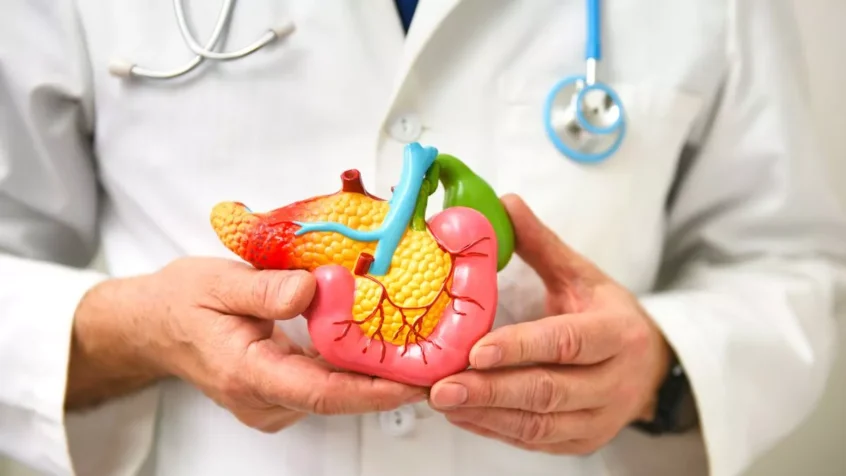The pancreas, a slim pad of tissue which sits in the curve of the small intestine under the stomach, performs two roles.
For the first, its beta-cells produce insulin that regulates blood sugar. We need pancreatic beta-cells to survive. In type 1 diabetes there are no, or very few, working beta-cells. And the pancreas’s second role is to produce enzymes that digest fat, carbohydrate and protein in the gut.
In the quest to cure type 1 diabetes, scientists at the universities of Exeter, Cambridge and Helsinki in Finland made a surprising discovery – a gene that’s essential for forming the pancreas in human beings is absent from almost all other animals except apes such as chimpanzees, gorillas and some monkeys.
Exeter University’s Dr Nick Owens said: “This research really emphasises the importance of studying the human pancreas in order to understand and find new treatments for diabetes.” The gene, ZNF808, belongs to a family of recently evolved proteins which bind and ‘switch off’ specific regions of DNA.
Dr Michael Imbeault, of Cambridge University, added: “These findings show that genes like ZNF808, even if relatively ‘recent’ in evolution, can have a crucial role in human development. ZNF808 is a member of the largest, but also least studied family of proteins that regulate our genome. There are hundreds of genes like ZNF808 in our DNA, many primate or even human specific, and our results demonstrate how these can be key players in human health.”
The identification of ZNF808, as being involved in human pancreas development, occurred after researchers at the University of Exeter examined genetic samples from patients recruited across the world who were born without a pancreas. All had genetic changes leading to loss of ZNF808.
They then teamed up with colleagues in Cambridge and Helsinki to study the effect of ZNF808 loss on stem cells in the lab. The results showed that ZNF808 plays an important function early during human development when cells are ‘deciding’ whether to become a pancreas or liver. Astonishing!
Helsinki’s Professor Timo Otonkoski said: “The ultimate goal of our research is for this knowledge to be translated into being able to manipulate stem cells to produce beta-cells that can produce insulin in the laboratory. That could be the key to curing type 1 diabetes. Our finding is a significant step in understanding what makes the human pancreas unique, which could help progress this area.”

